danbricklin.com/log
|
|
|
|
Nantucket Conference
|
At the beginning of May 2000 I attended the Nantucket Conference on the Internet Economy along with many other Boston area founders, CEOs, and major Internet people. I was there as one of the few speakers, though almost all attendees could have been on many of the panels.
Nantucket is a small island off the East Coast near Hyannis, Massachusetts. You get there either by small plane or boat. I took a one-hour high speed ferry.
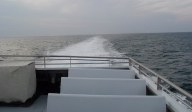 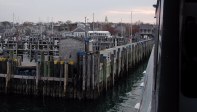 On the ferry to Nantucket; pulling into the dock
The purpose of the conference was to have "high-level networking and idea sharing in the Boston area." It was on the island as a "chance to get away from the daily grind, meet new people, renew old friendships, and think about what we do in a fresh way." About 150 people were signed up (a full house).
The first evening was registration, a cocktail party, and then dinner on your own. I went out with John Dodge, editor of what is now eWeek (but known for years as PC Week), and several others. We went to one of the restaurants that were open (it's still off-season), "The Boarding House", which was quite good. (I'm going to mention few names in pictures to save me writing time checking...)
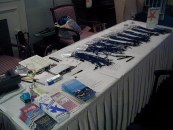 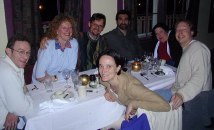 Registration table; our table at dinner
The next morning, we all packed into a room to listen to speakers and have lots of questions from the audience. This conference was officially "off the record" to the few press people in attendance.
I was on the first panel, "Creating Compelling Customer Experiences". It was moderated by Scott Kirsner, a journalist with Fast Company, the Boston Globe, and Wired. My fellow panelists were David Rose of Viant and Kel Kelly of Toysmart.com. I talked about usability testing, and some of the techniques we use in customer support at Trellix. David talked about better understanding of what users do on a web site and some neat innovations. Kel talked about going the extra mile in customer service.
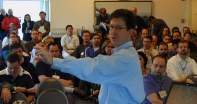 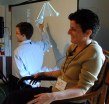 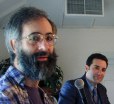 My view of David speaking, Kel and David listening to a question, and David's view of me and Scott (he took my camera -- it was very informal on stage)
Since it's off the record, I didn't take many notes. Having theater seating, instead of tables, meant note taking was done on paper. Eventually I got tired of writing, and did a little with my Palm and keyboard on my lap on the program book for support. (The Stowaway keyboard folds, so it needs a firm surface on which to type.)
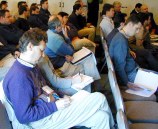 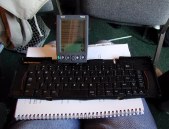 Bill Bulkeley (Wall Street Journal) and others use paper for notes; notetaking on my lap
Scott used a Visor with the IDEO eyemodule plug-in to take some pictures. See my "Scott Kirsner's eyemodule pictures" page for more of Scott's eyemodule pictures from the conference.
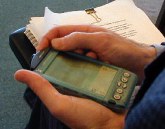 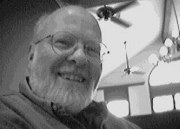 Scott and Visor with eyemodule digital camera plug-in, his picture of Tim Horgan of CIO.com (see "Scott Kirsner's eyemodule pictures" for more pictures, color and black&white)
A few points that were made during the conference that I guess I'm allowed to repeat:
Lisa DeSisto, VP and GM of Boston.com, talked a lot about their experiences through the years (they went live in October 1995). They are now the only regional portal that's highly rated among all sites (they are #15 on Media Metrix Q4 Reach). One story she told was of a conference (not this one) where they wanted to sponsor something but almost everything was taken. They decided to sponsor the restrooms. They put up signs like this:
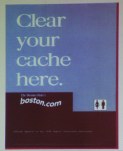 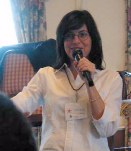 Lisa of Boston.com and one of their sponsorship signs
All of the speakers commented (in jokes, of course) at that conference about Boston.com, so it was a great publicity stunt. They used the tag line: "#1 and #2 in New England." (It took me a little while to get the school kid bathroom humor.) This is different than the image the Boston Globe newspaper has, so their independence was helpful...
To try to make this Nantucket Conference interesting and loosen things up, the organizers tried a few things. There were "Analyze This" sessions where we heard from business-school students presenting business plans and then we gave them feedback. There was a "WhoWantsToBeAZillionaire.com" session where three attendees were asked questions about the Internet/Computer Industry, getting points. While they could come up with the answer to which of a few things Kozmo.com will not deliver in Boston (Sam Adams beer), they couldn't name Microsoft's first spreadsheet (Multiplan) from 15 years ago. Ah, these youngsters!
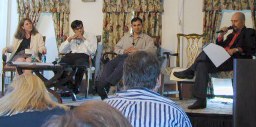 WhoWantsToBeAZillionaire.com competition
That night we had dinner together. Here's someone outside the dining hall in the classic pose with back to gorgeous sunset, whale shaped weathervane, and holding a cell phone:
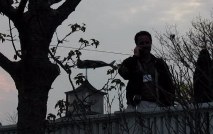 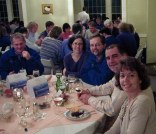 Always in touch...; dinner was networking around round tables
The next day started with Bob Metcalfe, technology pundit, VP of Technology at IDG, Ethernet inventor, leader of Agenda conference, resident of Boston and Maine, etc., etc. Bob is a great speaker. He also prepares. Here he is early in the morning laying out cards with notes for his talk entitled "Life After the Web: Looking Forward":
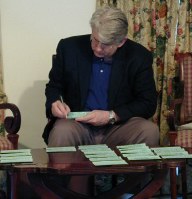 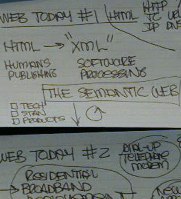 Bob Metcalfe preparing his speech using cards for notes
I had to leave near the end of his speech to catch the ferry back to the mainland. What I heard was quite good. I took notes (on paper while standing).
 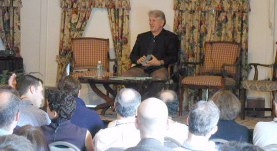 Bob speaking
The notes (I didn't tape record this to check, so I may have lots of errors and these aren't "quotes", they are "impressions"):
That was it. Time to go home! A nice conference with lots of good contacts.
(Much of this was written on the ferry going home. As usual, it's all done with Trellix Web to make it all easy.)
|
|
|
© Copyright 1999-2018 by Daniel Bricklin
All Rights Reserved.
|